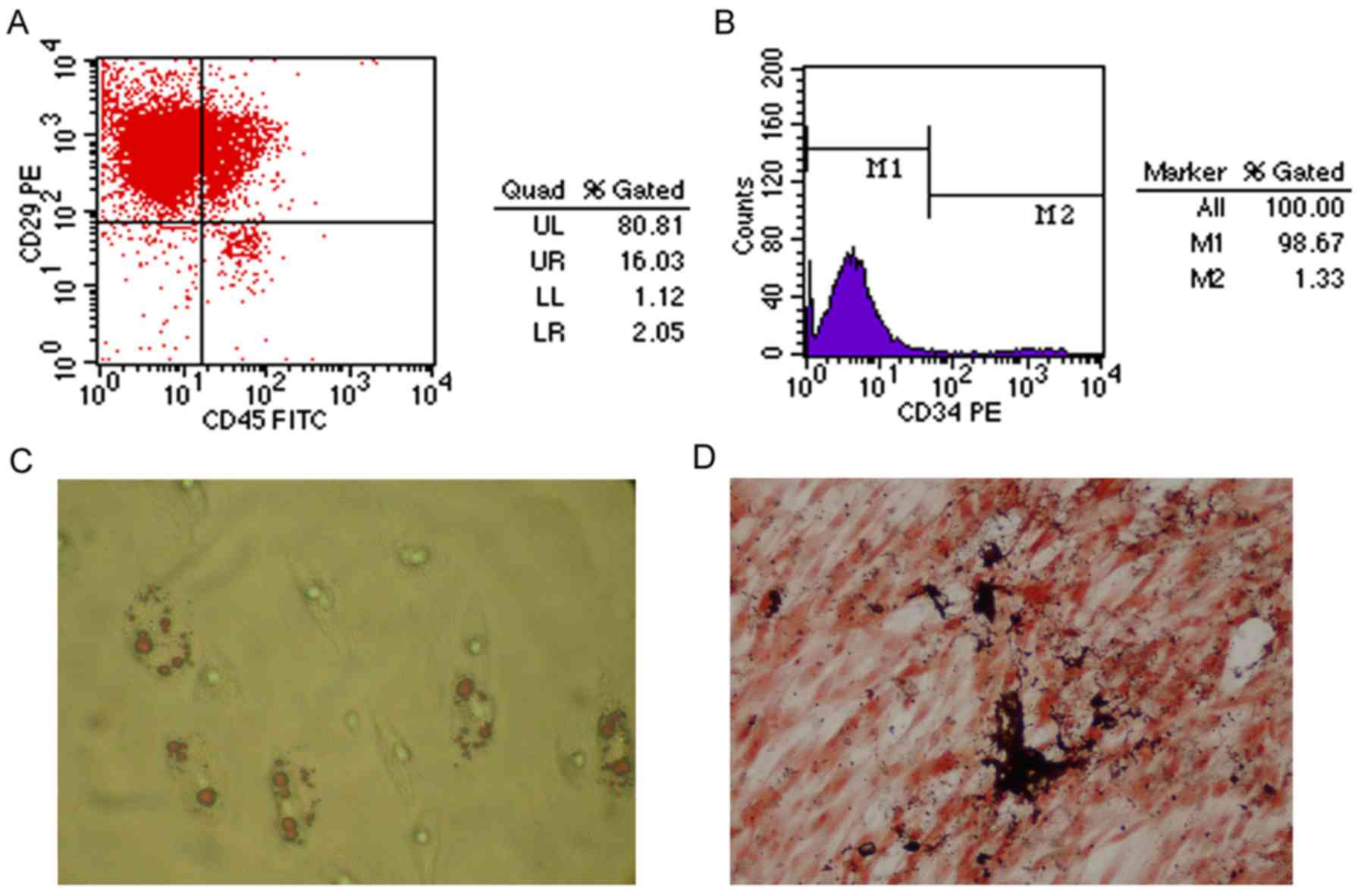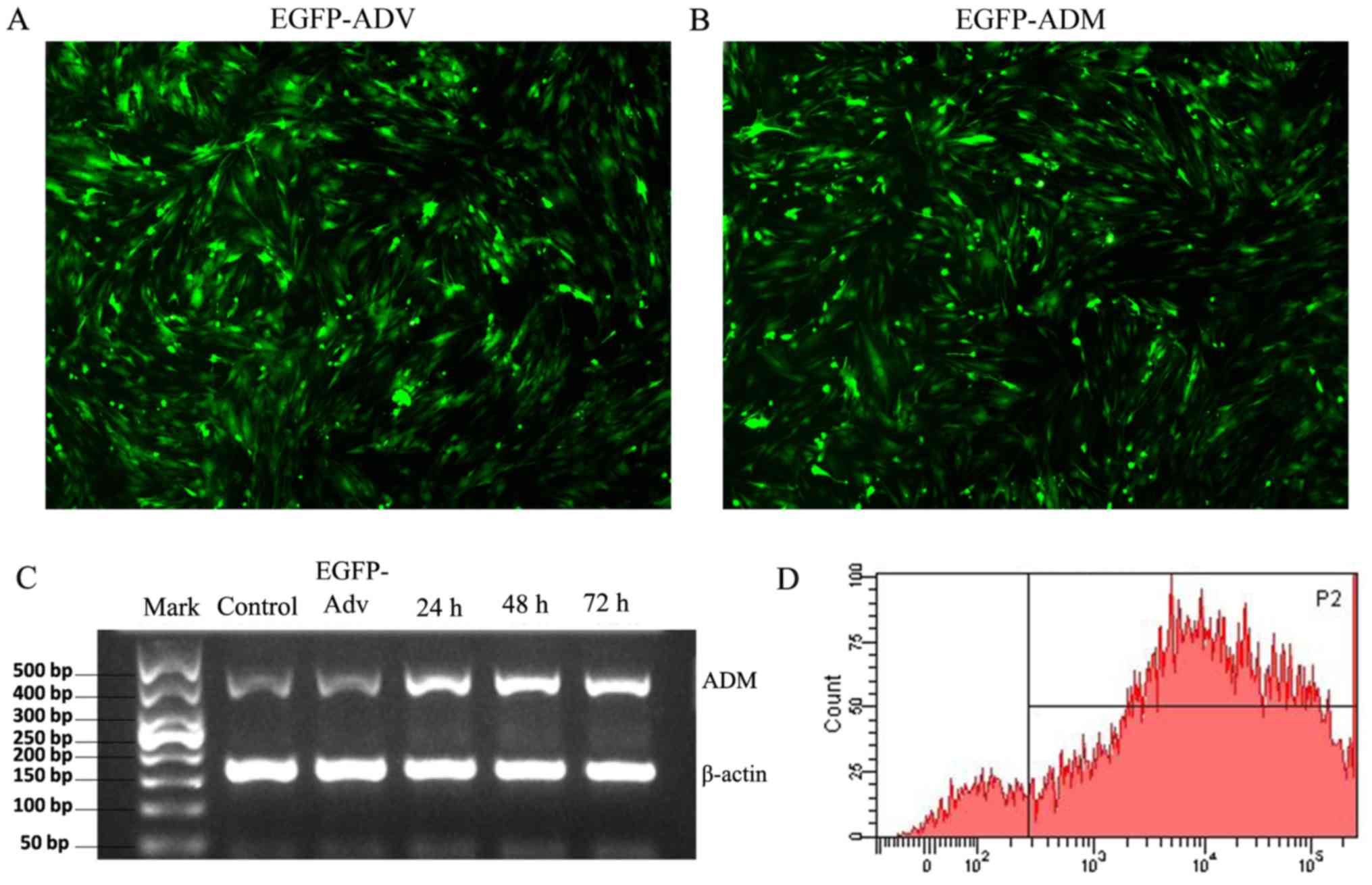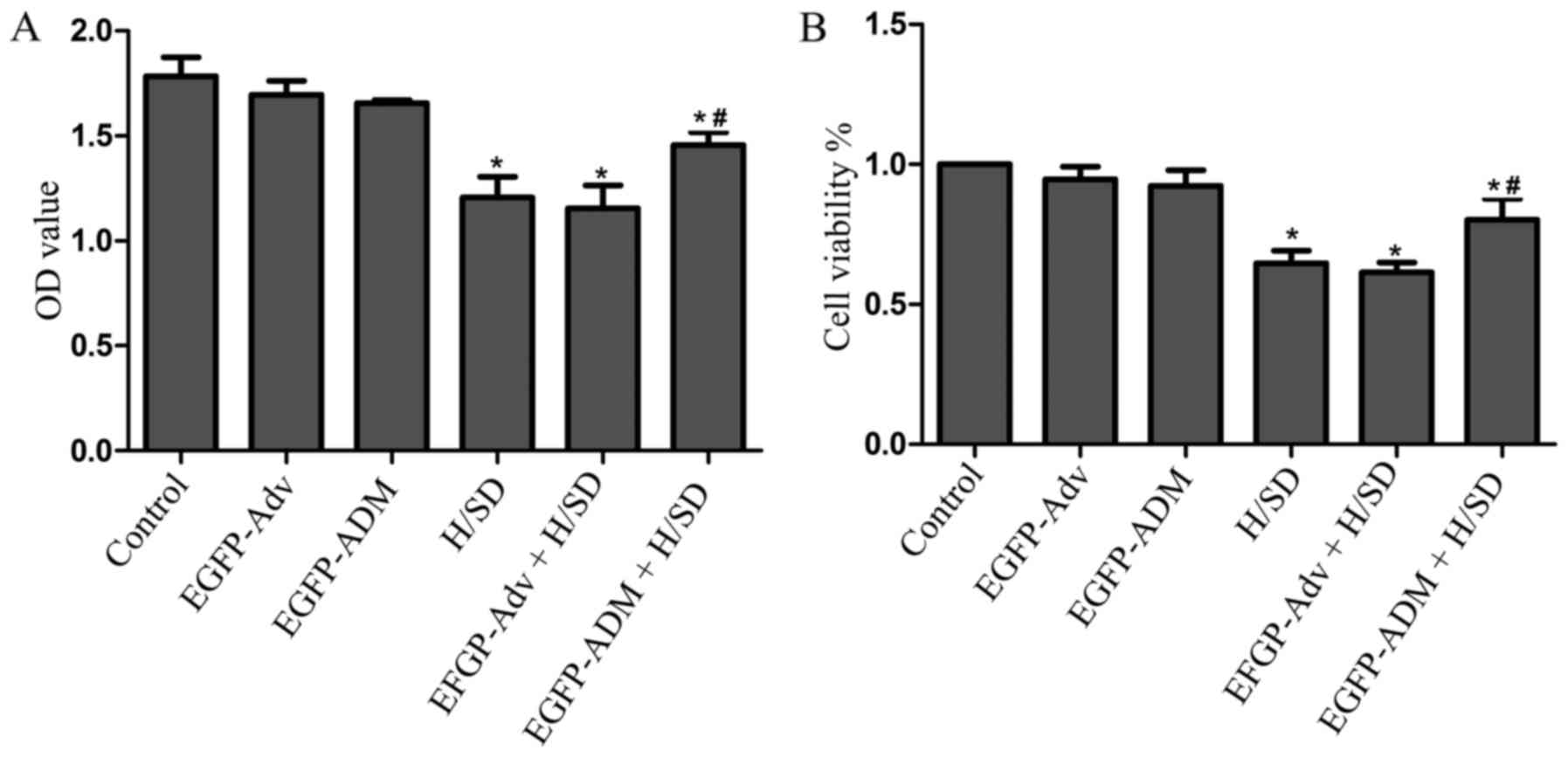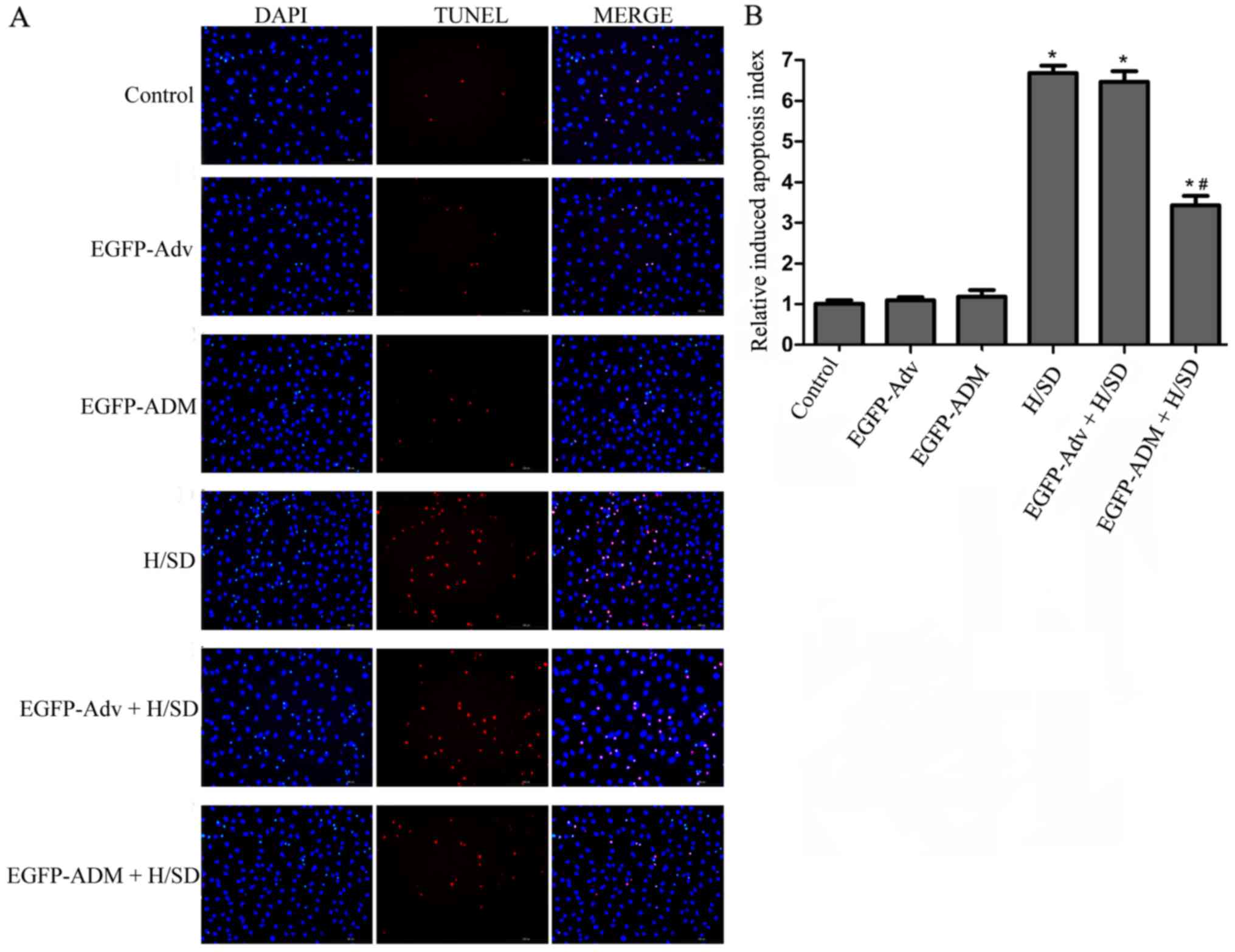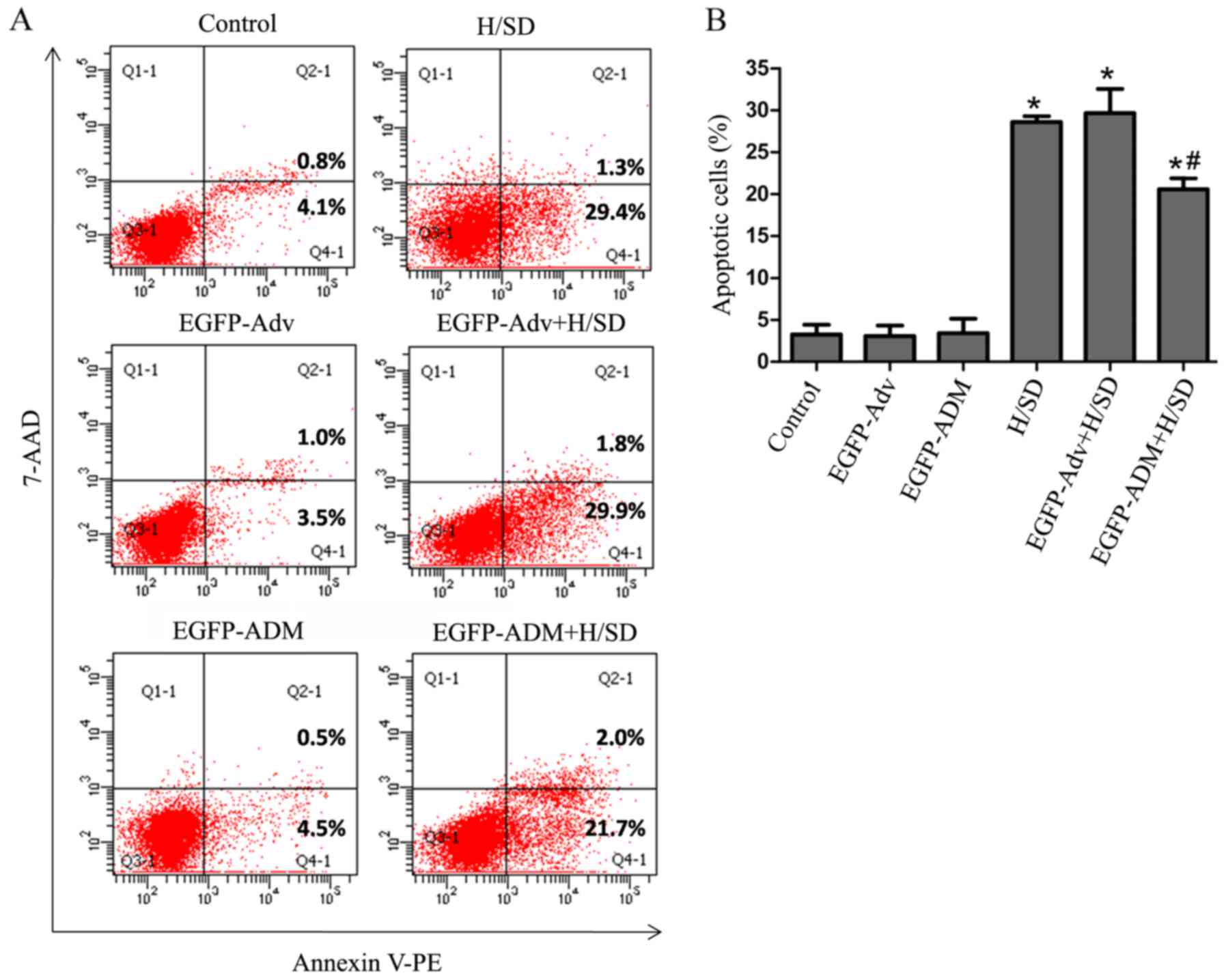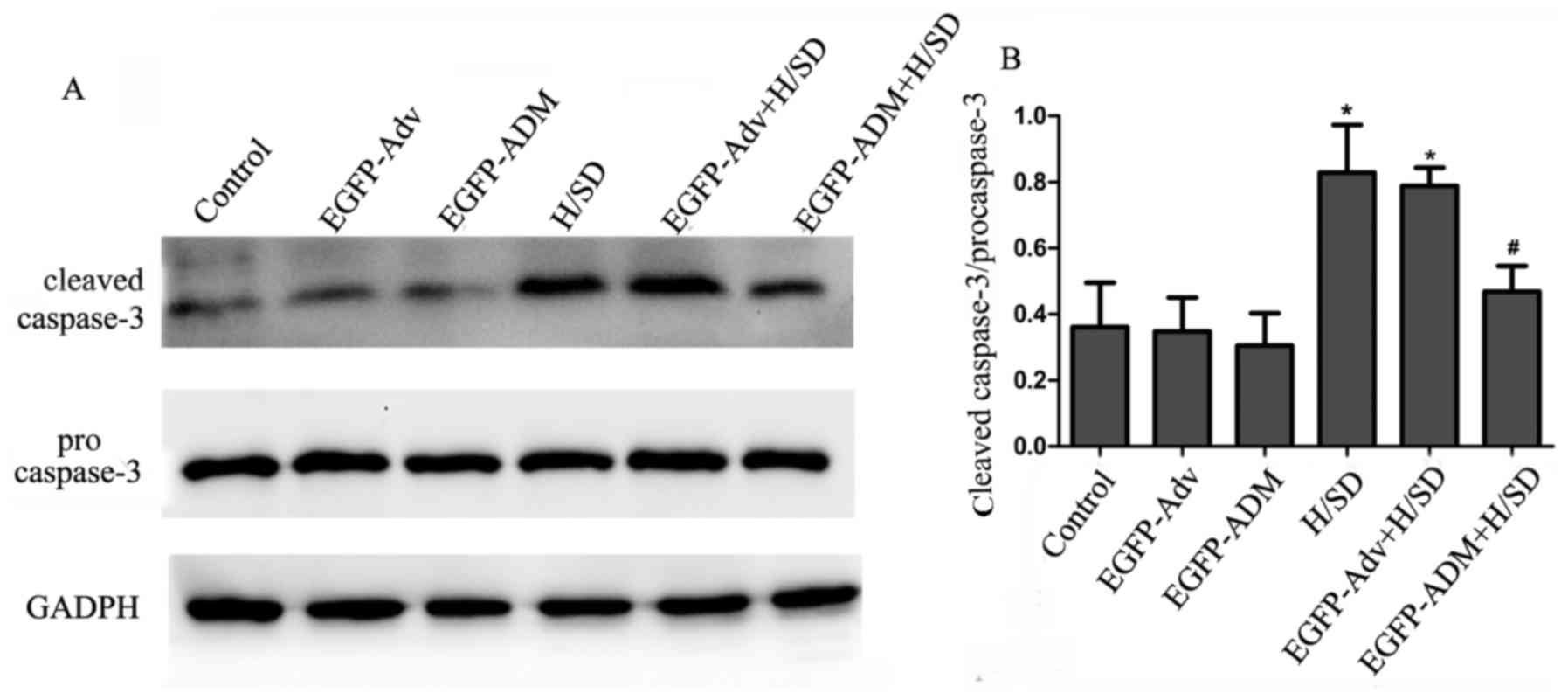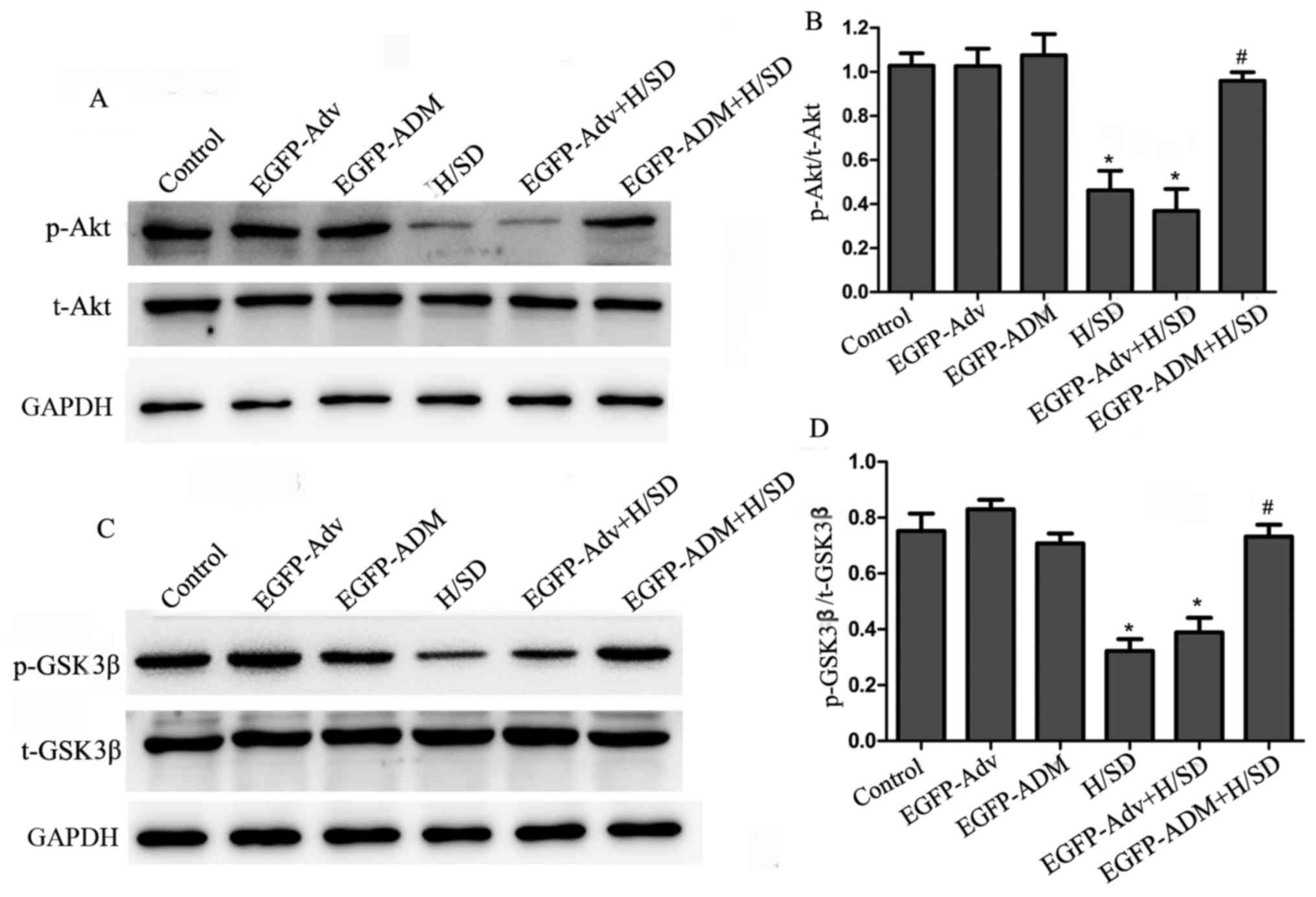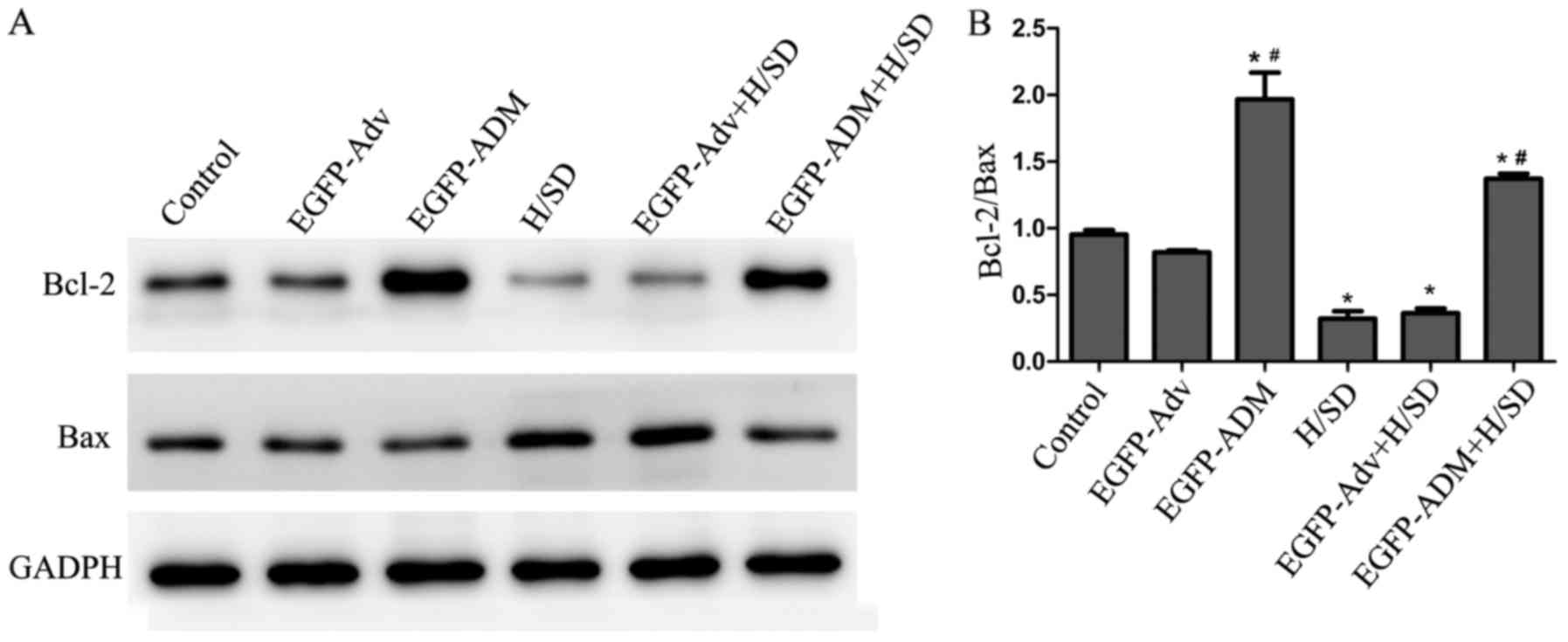|
1
|
Rouhi L, Kajbafzadeh AM, Modaresi M,
Shariati M and Hamrahi D: Autologous serum enhances cardiomyocyte
differentiation of rat bone marrow mesenchymal stem cells in the
presence of transforming growth factor-β1 (TGF-β1). In Vitro Cell
Dev Biol Anim. 49:287–294. 2013. View Article : Google Scholar : PubMed/NCBI
|
|
2
|
Ishimine H, Yamakawa N, Sasao M, Tadokoro
M, Kami D, Komazaki S, Tokuhara M, Takada H, Ito Y, Kuno S, et al:
N-Cadherin is a prospective cell surface marker of human
mesenchymal stem cells that have high ability for cardiomyocyte
differentiation. Biochem Biophys Res Commun. 438:753–759. 2013.
View Article : Google Scholar : PubMed/NCBI
|
|
3
|
Fukuda K and Fujita J: Mesenchymal, but
not hematopoietic, stem cells can be mobilized and differentiate
into cardiomyocytes after myocardial infarction in mice. Kidney
Int. 68:1940–1943. 2005. View Article : Google Scholar : PubMed/NCBI
|
|
4
|
Montanari S, Dayan V, Yannarelli G, Billia
F, Viswanathan S, Connelly KA and Keating A: Mesenchymal stromal
cells improve cardiac function and left ventricular remodeling in a
heart transplantation model. J Heart Lung Transplant. 34:1481–1488.
2015. View Article : Google Scholar : PubMed/NCBI
|
|
5
|
Mathiasen AB, Qayyum AA, Jørgensen E,
Helqvist S, Fischer-Nielsen A, Kofoed KF, Haack-Sørensen M, Ekblond
A and Kastrup J: Bone marrow-derived mesenchymal stromal cell
treatment in patients with severe ischaemic heart failure: A
randomized placebo-controlled trial (MSC-HF trial). Eur Heart J.
36:1744–1753. 2015. View Article : Google Scholar : PubMed/NCBI
|
|
6
|
Mias C, Lairez O, Trouche E, Roncalli J,
Calise D, Seguelas MH, Ordener C, Piercecchi-Marti MD, Auge N,
Salvayre AN, et al: Mesenchymal stem cells promote matrix
metalloproteinase secretion by cardiac fibroblasts and reduce
cardiac ventricular fibrosis after myocardial infarction. Stem
Cells. 27:2734–2743. 2009. View
Article : Google Scholar : PubMed/NCBI
|
|
7
|
Müller-Ehmsen J, Krausgrill B, Burst V,
Schenk K, Neisen UC, Fries JW, Fleischmann BK, Hescheler J and
Schwinger RH: Effective engraftment but poor mid-term persistence
of mononuclear and mesenchymal bone marrow cells in acute and
chronic rat myocardial infarction. J Mol Cell Cardiol. 41:876–884.
2006. View Article : Google Scholar : PubMed/NCBI
|
|
8
|
Kolossov E, Bostani T, Roell W, Breitbach
M, Pillekamp F, Nygren JM, Sasse P, Rubenchik O, Fries JW, Wenzel
D, et al: Engraftment of engineered ES cell-derived cardiomyocytes
but not BM cells restores contractile function to the infarcted
myocardium. J Exp Med. 203:2315–2327. 2006. View Article : Google Scholar : PubMed/NCBI
|
|
9
|
Toma C, Pittenger MF, Cahill KS, Byrne BJ
and Kessler PD: Human mesenchymal stem cells differentiate to a
cardiomyocyte phenotype in the adult murine heart. Circulation.
105:93–98. 2002. View Article : Google Scholar : PubMed/NCBI
|
|
10
|
Zhu W, Chen J, Cong X, Hu S and Chen X:
Hypoxia and serum deprivation-induced apoptosis in mesenchymal stem
cells. Stem Cells. 24:416–425. 2006. View Article : Google Scholar
|
|
11
|
Suresh SC, Selvaraju V, Thirunavukkarasu
M, Goldman JW, Husain A, Alexander Palesty J, Sanchez JA, McFadden
DW and Maulik N: Thioredoxin-1 (Trx1) engineered mesenchymal stem
cell therapy increased pro-angiogenic factors, reduced fibrosis and
improved heart function in the infarcted rat myocardium. Int J
Cardiol. 201:517–528. 2015. View Article : Google Scholar : PubMed/NCBI
|
|
12
|
Wu XY, Hao CP, Ling M, Guo CH and Ma W:
Hypoxia-induced apoptosis is blocked by adrenomedullin via
upregulation of Bcl-2 in human osteosarcoma cells. Oncol Rep.
34:787–794. 2015. View Article : Google Scholar : PubMed/NCBI
|
|
13
|
Di Liddo R, Bridi D, Gottardi M, De Angeli
S, Grandi C, Tasso A, Bertalot T, Martinelli G, Gherlinzoni F and
Conconi MT: Adrenomedullin in the growth modulation and
differentiation of acute myeloid leukemia cells. Int J Oncol.
48:1659–1669. 2016. View Article : Google Scholar : PubMed/NCBI
|
|
14
|
Ah Kioon MD, Asensio C, Ea HK, Velard F,
Uzan B, Rullé S, Bazille C, Marty C, Falgarone G, Nguyen C, et al:
Adrenomedullin(22-52) combats inflammation and prevents systemic
bone loss in murine collagen-induced arthritis. Arthritis Rheum.
64:1069–1081. 2012. View Article : Google Scholar
|
|
15
|
Kaafarani I, Fernandez-Sauze S, Berenguer
C, Chinot O, Delfino C, Dussert C, Metellus P, Boudouresque F,
Mabrouk K, Grisoli F, et al: Targeting adrenomedullin receptors
with systemic delivery of neutralizing antibodies inhibits tumor
angiogenesis and suppresses growth of human tumor xenografts in
mice. FASEB J. 23:3424–3435. 2009. View Article : Google Scholar : PubMed/NCBI
|
|
16
|
Chen P, Huang Y, Bong R, Ding Y, Song N,
Wang X, Song X and Luo Y: Tumor-associated macrophages promote
angiogenesis and melanoma growth via adrenomedullin in a paracrine
and autocrine manner. Clin Cancer Res. 17:7230–7239. 2011.
View Article : Google Scholar : PubMed/NCBI
|
|
17
|
Sakimoto S, Kidoya H, Kamei M, Naito H,
Yamakawa D, Sakaguchi H, Wakabayashi T, Nishida K and Takakura N:
An angiogenic role for adrenomedullin in choroidal
neovascularization. PLoS One. 8:e580962013. View Article : Google Scholar : PubMed/NCBI
|
|
18
|
Kim JY, Park WD, Lee S and Park JH:
Adrenomedullin is involved in the progression of colonic
adenocarcinoma. Mol Med Rep. 6:1030–1034. 2012. View Article : Google Scholar : PubMed/NCBI
|
|
19
|
Yin H, Chao L and Chao J: Adrenomedullin
protects against myocardial apoptosis after ischemia/reperfusion
through activation of Akt-GSK signaling. Hypertension. 43:109–116.
2004. View Article : Google Scholar
|
|
20
|
Zhou PH, Hu W, Zhang XB, Wang W2 and Zhang
LJ: Protective effect of adrenomedullin on rat leydig cells from
lipopolysaccharide-induced inflammation and apoptosis via the
PI3K/Akt signaling pathway ADM on rat leydig cells from
inflammation and apoptosis. Mediators Inflamm. 2016:72015492016.
View Article : Google Scholar : PubMed/NCBI
|
|
21
|
Kong XQ, Wang LX, Yang CS, Chen SF, Xue YZ
and Liu YH: Effects of adrenomedullin on the cell numbers and
apoptosis of endothelial progenitor cells. Clin Invest Med.
31:E117–E122. 2008. View Article : Google Scholar : PubMed/NCBI
|
|
22
|
Kim W, Moon SO, Sung MJ, Kim SH, Lee S,
Kim HJ, Koh GY and Park SK: Protective effect of adrenomedullin in
mannitol-induced apoptosis. Apoptosis. 7:527–536. 2002. View Article : Google Scholar : PubMed/NCBI
|
|
23
|
Chen L, Zhang Y, Sun X, Li H, LeSage G,
Javer A, Zhang X, Wei X, Jiang Y and Yin D: Synthetic resveratrol
aliphatic acid inhibits TLR2-mediated apoptosis and an involvement
of Akt/GSK3β pathway. Bioorg Med Chem. 17:4378–4382. 2009.
View Article : Google Scholar : PubMed/NCBI
|
|
24
|
Ying Y, Zhu H, Liang Z, Ma X and Li S:
GLP1 protects cardiomyocytes from palmitate-induced apoptosis via
Akt/GSK3b/b-catenin pathway. J Mol Endocrinol. 55:245–262. 2015.
View Article : Google Scholar : PubMed/NCBI
|
|
25
|
Yin H, Chao L and Chao J: Kallikrein/kinin
protects against myocardial apoptosis after ischemia/reperfusion
via Akt-glycogen synthase kinase-3 and Akt-Bad.14-3-3 signaling
pathways. J Biol Chem. 280:8022–8030. 2005. View Article : Google Scholar
|
|
26
|
Kim CH, Hao J, Ahn HY and Kim SW:
Activation of Akt/protein kinase B mediates the protective effects
of mechanical stretching against myocardial ischemia-reperfusion
injury. J Vet Sci. 13:235–244. 2012. View Article : Google Scholar : PubMed/NCBI
|
|
27
|
Song JQ, Teng X, Cai Y, Tang CS and Qi YF:
Activation of Akt/GSK-3β signaling pathway is involved in
intermedin(1-53) protection against myocardial apoptosis induced by
ischemia/reperfusion. Apoptosis. 14:1061–1069. 2009. View Article : Google Scholar : PubMed/NCBI
|
|
28
|
Chen J, Baydoun AR, Xu R, Deng L, Liu X,
Zhu W, Shi L, Cong X, Hu S and Chen X: Lysophosphatidic acid
protects mesenchymal stem cells against hypoxia and serum
deprivation-induced apoptosis. Stem Cells. 26:135–145. 2008.
View Article : Google Scholar
|
|
29
|
He J, Wang C, Sun Y, Lu B, Cui J, Dong N,
Zhang M, Liu Y and Yu B: Exendin-4 protects bone marrow-derived
mesenchymal stem cells against oxygen/glucose and serum
deprivation-induced apoptosis through the activation of the
cAMP/PKA signaling pathway and the attenuation of ER stress. Int J
Mol Med. 37:889–900. 2016. View Article : Google Scholar : PubMed/NCBI
|
|
30
|
Zhang F, Cui J, Lv B and Yu B: Nicorandil
protects mesenchymal stem cells against hypoxia and serum
deprivation-induced apoptosis. Int J Mol Med. 36:415–423. 2015.
View Article : Google Scholar : PubMed/NCBI
|
|
31
|
Li L, Zhang S, Zhang Y, Yu B, Xu Y and
Guan Z: Paracrine action mediate the antifibrotic effect of
transplanted mesenchymal stem cells in a rat model of global heart
failure. Mol Biol Rep. 36:725–731. 2009. View Article : Google Scholar
|
|
32
|
Zhu X, Jiang Y, Shan PF, Shen J, Liang QH,
Cui RR, Liu Y, Liu GY, Wu SS, Lu Q, et al: Vaspin attenuates the
apoptosis of human osteoblasts through ERK signaling pathway. Amino
Acids. 44:961–968. 2013. View Article : Google Scholar
|
|
33
|
Yu D, Mu S, Zhao D, Wang G, Chen Z, Ren H
and Fu Q: Puerarin attenuates glucocorticoid-induced apoptosis of
hFOB1.19 cells through the JNK- and Akt-mediated mitochondrial
apoptotic pathways. Int J Mol Med. 36:345–354. 2015. View Article : Google Scholar : PubMed/NCBI
|
|
34
|
Parekkadan B and Milwid JM: Mesenchymal
stem cells as therapeutics. Annu Rev Biomed Eng. 12:87–117. 2010.
View Article : Google Scholar : PubMed/NCBI
|
|
35
|
Shi RZ and Li QP: Improving outcome of
transplanted mesenchymal stem cells for ischemic heart disease.
Biochem Biophys Res Commun. 376:247–250. 2008. View Article : Google Scholar : PubMed/NCBI
|
|
36
|
Robey TE, Saiget MK, Reinecke H and Murry
CE: Systems approaches to preventing transplanted cell death in
cardiac repair. J Mol Cell Cardiol. 45:567–581. 2008. View Article : Google Scholar : PubMed/NCBI
|
|
37
|
Amiri F, Jahanian-Najafabadi A and
Roudkenar MH: In vitro augmentation of mesenchymal stem cells
viability in stressful microenvironments: In vitro augmentation of
mesenchymal stem cells viability. Cell Stress Chaperones.
20:237–251. 2015. View Article : Google Scholar :
|
|
38
|
Potier E, Ferreira E, Meunier A, Sedel L,
Logeart-Avramoglou D and Petite H: Prolonged hypoxia concomitant
with serum deprivation induces massive human mesenchymal stem cell
death. Tissue Eng. 13:1325–1331. 2007. View Article : Google Scholar : PubMed/NCBI
|
|
39
|
Edelstein ML, Abedi MR and Wixon J: Gene
therapy clinical trials worldwide to 2007 - an update. J Gene Med.
9:833–842. 2007. View Article : Google Scholar : PubMed/NCBI
|
|
40
|
Jo J, Nagaya N, Miyahara Y, Kataoka M,
Harada-Shiba M, Kangawa K and Tabata Y: Transplantation of
genetically engineered mesenchymal stem cells improves cardiac
function in rats with myocardial infarction: Benefit of a novel
nonviral vector, cationized dextran. Tissue Eng. 13:313–322. 2007.
View Article : Google Scholar : PubMed/NCBI
|
|
41
|
Treacy O, Ryan AE, Heinzl T, O'Flynn L,
Cregg M, Wilk M, Odoardi F, Lohan P, O'Brien T, Nosov M, et al:
Adenoviral transduction of mesenchymal stem cells: In vitro
responses and in vivo immune responses after cell transplantation.
PLoS One. 7:e426622012. View Article : Google Scholar : PubMed/NCBI
|
|
42
|
Park SC, Yoon JH, Lee JH, Yu SJ, Myung SJ,
Kim W, Gwak GY, Lee SH, Lee SM, Jang JJ, et al: Hypoxia-inducible
adrenomedullin accelerates hepatocellular carcinoma cell growth.
Cancer Lett. 271:314–322. 2008. View Article : Google Scholar : PubMed/NCBI
|
|
43
|
Chung H, Seo S, Moon M and Park S:
Phosphati-dylinositol-3-kinase/Akt/glycogen synthase kinase-3 beta
and ERK1/2 pathways mediate protective effects of acylated and
unacylated ghrelin against oxygen-glucose deprivation-induced
apoptosis in primary rat cortical neuronal cells. J Endocrinol.
198:511–521. 2008. View Article : Google Scholar : PubMed/NCBI
|
|
44
|
Yan X, Lyu T, Jia N, Yu Y, Hua K and Feng
W: Huaier aqueous extract inhibits ovarian cancer cell motility via
the AKT/GSK3β/β-catenin pathway. PLoS One. 8:e637312013. View Article : Google Scholar
|
|
45
|
Porter AG and Jänicke RU: Emerging roles
of caspase-3 in apoptosis. Cell Death Differ. 6:99–104. 1999.
View Article : Google Scholar : PubMed/NCBI
|
|
46
|
Linseman DA, Butts BD, Precht TA, Phelps
RA, Le SS, Laessig TA, Bouchard RJ, Florez-McClure ML and
Heidenreich KA: Glycogen synthase kinase-3beta phosphorylates Bax
and promotes its mitochondrial localization during neuronal
apoptosis. J Neurosci. 24:9993–10002. 2004. View Article : Google Scholar : PubMed/NCBI
|
|
47
|
Kaga S, Zhan L, Altaf E and Maulik N:
Glycogen synthase kinase-3beta/beta-catenin promotes angiogenic and
anti-apoptotic signaling through the induction of VEGF, Bcl-2 and
survivin expression in rat ischemic preconditioned myocardium. J
Mol Cell Cardiol. 40:138–147. 2006. View Article : Google Scholar
|
|
48
|
Zhou M, Simms HH and Wang P:
Adrenomedullin and adrenomedullin binding protein-1 attenuate
vascular endothelial cell apoptosis in sepsis. Ann Surg.
240:321–330. 2004. View Article : Google Scholar : PubMed/NCBI
|



